Welcome to the first post in our series about making the switch from balanced to structured literacy!
Today we’re tackling phonics.
Specifically, systematic phonics instruction.

Before we begin, let’s be clear.
I am not saying that balanced literacy teachers don’t teach phonics.
The concern I have is that this instruction is often neither systematic nor explicit.
In other words … a balanced literacy teacher may lack a phonics scope and sequence and typically does not teach each new sound-spelling in a specific order.
Instead, phonics may be taught as it comes up in small group lessons or independent reading.
Even if the opposite is true – the teacher does teach phonics in a structured way – there is often precious little practice with decodable text. (But that will be another post in this series.)
Bottom line? Even if you already teach phonics, keep reading!
Step 1
If you’re ready for systematic phonics instruction, the first thing you need to do to implement systematic phonics instruction is to get a solid scope and sequence. Hopefully your whole school is on board so that you can share the same one.
Research does not tell us what scope and sequence is best. We do know that we should start with simple skills and move to more complex ones.
This is the general order that I prefer:
- CVC words (mix in digraphs sh, th, ch & wh)
- Beginning and final consonant blends (sometimes called consonant clusters)
- CVCE words
- Common vowel teams
- R-controlled vowels (ar, ir, er, ur, or)
- Diphthongs and complex vowels (oi, oy, ow, ou, aw, au)
- Consonant-le words (bubble, cattle, riddle)
- Words with prefixes and suffixes
Of course this general outline doesn’t hit everything.
You can get my free, detailed scope and sequence below.
Free phonics scope and sequence
Sign up for our email list and get this FREE scope and sequence! I created this sequence based on my personal study, teaching experience, and Orton-Gillingham training. After you sign up, you’ll get a special offer for our Ultimate Collection of Phonics Word Lists. The scope and sequence will arrive in your email shortly.
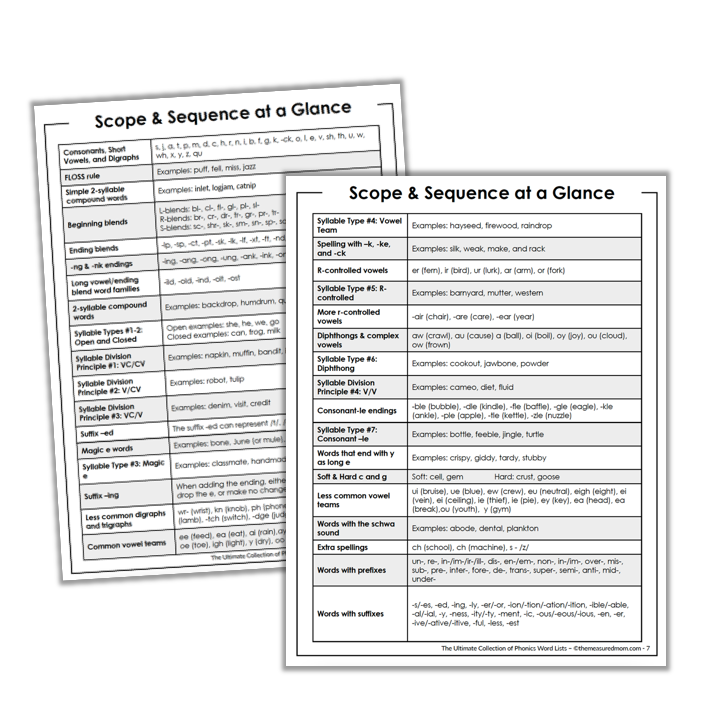
Step 2
Use an assessment aligned with your scope and sequence to assess your students’ phonics knowledge.
This assessment should be given at the beginning of the year in K-2. Older students only need to be given the assessment if they are struggling with word recognition.
A good assessment will help you pinpoint where to begin instruction.
1– Don’t give the full decoding assessment to each child; instead, administer just the sections that are recommended for the child’s grade level. However, always back up on the assessment or move ahead if it becomes clear that the child’s abilities are above or below grade level.
2– Break up the assessment as needed. If a child is tiring, it’s best to discontinue rather than to plow through. You want accurate results.
3-Give an encoding (spelling) assessment if desired. It’s likely that your students will read better than they spell (i.e. they will perform better on the decoding than the encoding assessment), so you may not want to form groups based on the encoding results. However, this is valuable information. Encoding (spelling) is often neglected, but it naturally fits into phonics lessons and should be included through dictation exercises.
Grab my free assessment (aligned with my scope and sequence) below.
Free phonics assessment
Looking for a free phonics assessment to help you gauge where your students are at with their phonics knowledge? We’ve got you covered with this comprehensive, yet easy-to-use resource! One teacher wrote, “I’ve used many phonics assessments and lot of them are very good, but this is the best I’ve seen!”
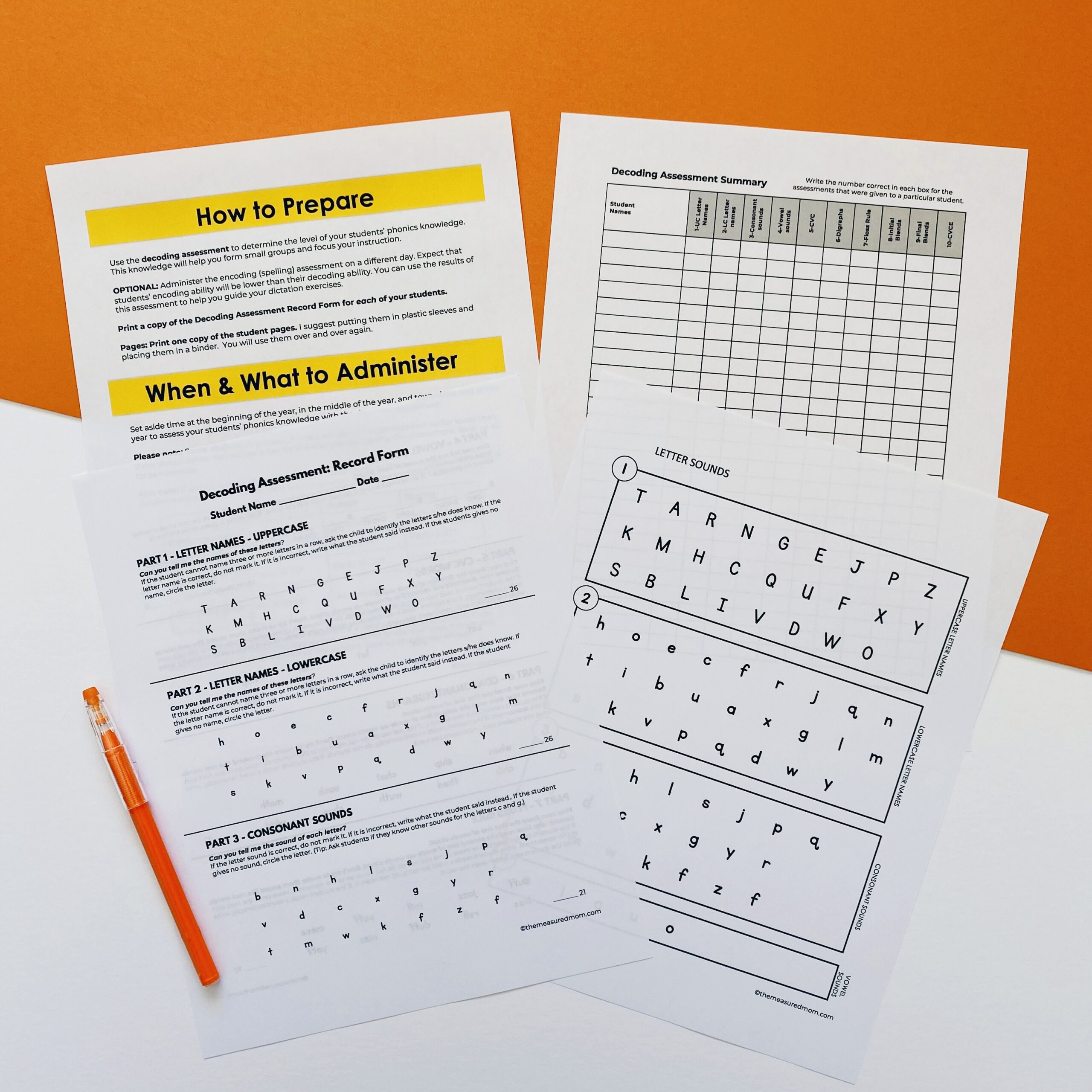
Step 3
Teach your phonics lessons in differentiated small groups if needed.
Just to be clear, this is my opinion – not a must. The National Reading Panel told us we can be successful with systematic phonics instruction in whole class or small group lessons.
But I know very well how varied that phonics knowledge is in pretty much any classroom. I wouldn’t want to teach kids who are struggling with letter sounds along with kids who are reading multisyllable words.
It doesn’t feel fair to either of them.
Some teachers teach the on-grade-level lesson to the whole class and then differentiate in small groups. Others just teach from where students are at, within the small groups.
They meet with the lower students more often to help them catch up to grade level.
When students’ phonics needs are vastly different, I think it’s best to differentiate small group phonics instruction right from the start. You can learn more about that in this post.
Step 4
Make sure your students have plenty of opportunities to reread the connected text (decodable passage or book) on subsequent days so that they can orthographically map the words.
Here are ways to make that happen:
- Put the passage or book in their reading bags; it should be the first thing they read before moving on to other books.
- Have students from the small phonics group reread their passage or book during buddy reading time.
- Send the book or passage home for extra practice.
- If time allows, have students begin their phonics small group lessons by rereading text from previous lessons.
YOU’LL LOVE THIS PRACTICAL BOOK!
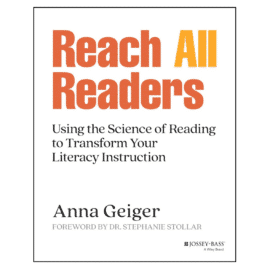
Looking for an easy-to-read guide to help you reach all readers? If you teach kindergarten through third grade, this is the book for you. Get practical ideas and lesson plan templates that you can implement tomorrow!
Keep an eye out for the rest of the posts in our From Balanced to Structured Literacy blog series!


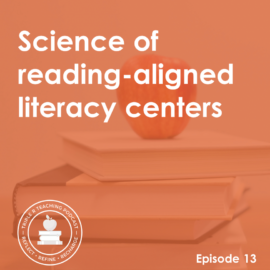
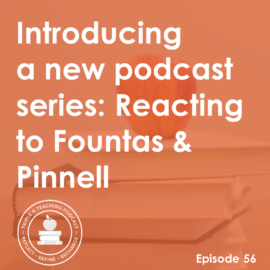

Leave a Comment